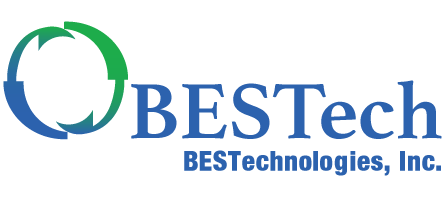FAQ’s
Select the question from the dropdown menu to reveal the answer.
What is grease?
A grease molecule consists of a glycerol backbone attached to three fatty acids. These elements combined are known as a triglyceride. Triglycerides are hydrophobic, which means they are “water-fearing.” That is why grease does not dissolve in water.
How does an improperly maintained grease trap increase operating costs?
Fats, oils and grease (FOG) create problems for equipment, drain pipes and infrastructure that move and treat wastewater. Devices such as grease traps and interceptors collect grease before it gets into a sewer or septic system. Grease that escapes the traps and interceptors sticks to the top of pipes in the form of a pasty, white mass. Left untreated, the mass eventually grows until it clogs the pipe. Drain back-ups create odor complaints, slip-and-fall accidents and result in unbudgeted maintenance dollars. Also, an improperly maintained grease trap can result in high levels of FOG and biochemical oxygen demand (BOD), which can lead to higher monthly sewage costs. Municipalities randomly measure FOG and BOD levels present in commercial systems’ discharges, and may assess a surcharge to the offending business based on its relative contribution of FOG and BOD to the municipal system. BESTechnologies grease remediation systems save clients money by reducing operating costs, mitigating workplace risks and contributing to customer satisfaction.
What happens to the grease, oils and fats that escape grease interceptors?
The grease control problem of a single restaurant is replicated on an exponentially larger scale in wastewater treatment systems throughout North America – the last line of defense before treated water is returned to open waters. It’s an expensive mess. The Wall Street Journal reports that three-quarters of America’s sewers “are so bunged up that they work at half capacity, causing 40,000 illegal spews a year into open water. Local governments already spend $25 billion a year to keep sewers running. . . . But the blockages now are almost all wrapped in fat. The perpetrator is fried food.”
Why not use chemicals to clear the pipes of grease?
Caustics, surfactants and other chemical-based additives may be added to wastewater systems Some of these chemical by-products are not removed during the wastewater treatment process and can be discharged into the environment. Surfactants and other detergents can be used in drain lines. However, these temporary remedies don’t solve the problem. Surfactants surround grease molecules and lift them into the water flow. FOG molecules that are surrounded by surfactants can recombine downstream and cause build up further downstream. Enzyme products are water-soluble and are often flushed from the drainpipe before they have time to work. Using caustics, surfactants and detergents simply moves grease further into the drain line and/or past the grease interceptor into the municipal system where it solidifies. Expensive plumbing bills and/or substantial fines usually follow. The most successful way to handle grease and BOD problems is to degrade and destroy the grease molecules; not move them further into the wastewater system.
How are BESTechnologies’ products different from other bacteria-based products?
BESTechnologies bacteria are a proprietary blend of live and “spore-forming” bacteria. They are benign, naturally-occurring microorganisms. We do not use any chemicals in our products. We develop and manufacture our products in our own laboratory, ensuring that our quality control standards are never compromised. Many biological products on the market use only dormant “spore-forming” bacteria that pass through drain lines without becoming active. At BESTechnologies, we combine two types of bacteria – vegetative and “spore-forming”– to provide unsurpassed effectiveness for grease remediation. These bacteria begin to consume grease immediately upon introduction into drain lines, lift stations or other targeted areas. The spore-forming bacteria have the ability to hibernate, and thereby survive, under certain adverse conditions. Both varieties establish colonies in the targeted areas, and almost immediately begin multiplying, creating new biological “factories” to process grease throughout the entire length of a pipe, grease trap or sewer line.
What happens to the grease?
Our bacteria secrete enzymes called lipases that “cleave” (cut) the grease into fatty acids and glycerol. The glycerol and the fatty acids are consumed by the bacteria and turned into carbon dioxide (CO2) and water (H2O).
Where can your Biofeed products be used?
Because BESTechnologies products are 100% natural, they can be used in restaurants, food processing plants, schools, prisons, hotels, hospitals and anywhere that grease accumulates in drain lines. Biofeed is also used in municipal lift stations, sewer lines, package plants and waste grease storage tanks.
Are Biofeed distributorships available?
Yes. As the North American grease remediation market continues to grow, the quality and reliability of BESTechnologies’ products offer excellent opportunities. Whether your business currently provides services to restaurants, food processors and/or municipal wastewater systems, or would like to begin doing so, explore increasing sales and margin by allowing our products to complement your existing lines. If your business is located outside of the United States, we are currently seeking overseas importers and distributors.
Still Have Questions?
Contact Us.
Fill out the form below to contact support.
"*" indicates required fields

